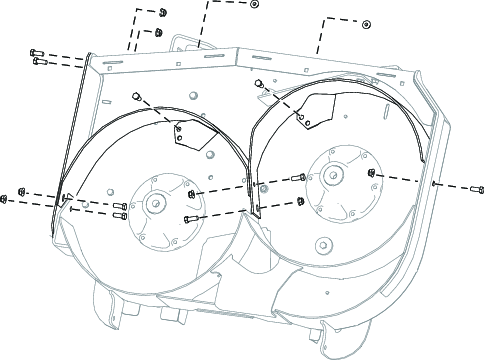Installation
Preparing the Machine
-
Park the machine on a level surface.
-
Disengage the PTO, engage the parking brake.
-
Shut off the engine and remove the key.
-
For easier access, raise the front of the machine and support it using jack stands rated for your machines.
Warning
Mechanical or hydraulic jacks may fail to support the machine and cause serious injury.
Use jack stands when supporting the machine.
Preparing the Mower Deck
-
Remove the existing mower blades; refer to the Operator’s Manual for the machine.
-
Remove the 2 bolts and 2 nuts securing the baffle to the deck and remove the baffle (Figure 1).
Note: Retain the baffle for converting back to side discharge.
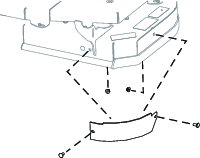
-
Install the fasteners in the same holes that they were removed from.
-
Remove the 2 bolts and nuts securing the directional guard to the deck and remove the guard (Figure 2).
Note: Retain the guard for converting back to side discharge.

Installing the Trailing Shield
Parts needed for this procedure:
| Trailing shield | 1 |
| R-clamps | 2 |
| Bolt (5/16 x 3/4 inch) | 2 |
| Nut (5/16 inch) |
-
Locate the axle rod where the shield will be installed (Figure 3).
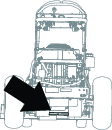
-
Install the R-clamps onto the rod. Ensure that the R-clamps face the correct direction as shown in Figure 4.
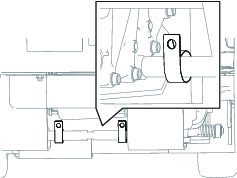
-
Install the shield using 2 bolts (5/16 x 3/4 inch) and 2 nuts (5/16 inch) as shown in Figure 5. The shield should be able to swing back and forth.
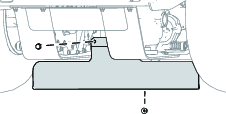
Installing the Kit
Installing the Mulching Blades
Parts needed for this procedure:
| Mulching blade | 3 |
Install the mulching blades and mower deck on the machine; refer to the Operator’s Manual for the machine.
Torque the bolts to 136 to 149 N∙m (100 to 110 ft-lb).
Operation
Operating Tips
Using the Fast Throttle Setting
For best mowing and maximum air circulation, operate the engine at the FAST position. Air is required to thoroughly cut grass clippings, so do not set the height of cut so low as to totally surround the mower in uncut grass. Always try to have 1 side of the mower free from uncut grass, which allows air to be drawn into the mower.
Cutting a Lawn for the First Time
Cut grass slightly longer than normal to ensure that the cutting height of the mower does not scalp any uneven ground. However, the cutting height used in the past is generally the best one to use. When cutting grass longer than 15 cm (6 inches) tall, cut the lawn twice to ensure an acceptable quality of cut.
Cutting a Third of the Grass Blade
Cut only about a third of the grass blade. Cutting more than that is not recommended unless grass is sparse, or it is late fall when grass grows more slowly.
Alternating the Mowing Direction
Alternate the mowing direction to keep the grass standing straight. This also helps disperse clippings which enhances decomposition and fertilization.
Mowing at Correct Intervals
Grass grows at different rates at different times of the year. To maintain the same cutting height, mow more often in early spring. As the grass growth rate slows in mid summer, mow less frequently. If you cannot mow for an extended period, first mow at a high cutting height, then mow again 2 days later at a lower height setting.
Using a Slower Cutting Speed
To improve cut quality, use a slower ground speed in certain conditions.
Avoiding Cutting Too Low
When mowing uneven turf, raise the cutting height to avoid scalping the turf.
Stopping the Machine
If you must stop the forward motion of the machine while mowing, a clump of grass clippings may drop onto your lawn. To avoid this, move onto a previously cut area with the blades engaged or you can disengage the mower deck while moving forward.
Keeping the Underside of the Mower Clean
Clean clippings and dirt from the underside of the mower after each use. If grass and dirt build up inside the mower, cutting quality will eventually become unsatisfactory.
Maintaining the Blade(s)
Maintain a sharp blade throughout the cutting season because a sharp blade cuts cleanly without tearing or shredding the grass blades. Tearing and shredding turns grass brown at the edges, which slows growth and increases the chance of disease. Check the mower blades after each use for sharpness, and for any wear or damage. File down any nicks and sharpen the blades as necessary. If a blade is damaged or worn, replace it immediately with a genuine Toro replacement blade.
